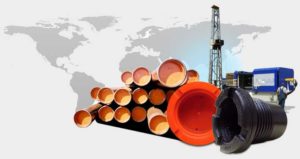Handling steel pipes requires meticulous care and adherence to safety protocols to ensure personnel and equipment remain safe. Proper pipe handling procedures prevent accidents and extend the life of the pipelines and equipment involved. Here, we’ll outline essential pipe handling techniques for safe and efficient operations.
What are the Pipe Handling Procedures?
Effective operating practices are critical in managing steel pipes, especially in the oil and gas industry, where they are frequently used. These pipe handling procedures encompass training, equipment inspection, and appropriate handling techniques to avoid accidents and damage. The following are the key safety guidelines to ensure proper operation of steel pipes:
1. Conduct Proper Training and Certification
The first step in ensuring safety when handling steel pipes is to provide comprehensive training to all personnel involved. Workers should be thoroughly trained to recognize hazards, understand safety protocols, and operate equipment for lifting and transporting pipes.
Certification for crane operation, rigging, and forklift driving is crucial. Regular refresher courses and drills can keep skills sharp and ensure everyone is up-to-date on the latest safety standards on pipe handling procedures.
2. Inspect Equipment Regularly
All equipment used in handling and transporting steel pipes, such as cranes and lifting clamps, should be inspected regularly to ensure they are in good working condition. Equipment inspections should include checking for signs of wear and tear, corrosion, or damage that could compromise safety.
Additionally, ensure that all lifting gear has the appropriate load rating for the weight of the pipes being handled. Damaged or defective equipment should be repaired or replaced immediately to avoid accidents.
3. Use the Right Lifting Equipment and Techniques
Selecting the appropriate lifting equipment is crucial when handling steel pipes. For example, clamps, slings, or spreader bars can help distribute weight evenly and reduce the risk of pipe deformation or slippage. Lifting magnets is common in some operations, but they must be carefully chosen based on the pipe’s material and weight to prevent accidents.
When lifting pipes, ensure that the lifting points are correctly positioned and the load is balanced. Never lift pipes using hooks directly in contact with their surface, as this can cause damage. Instead, use softeners like nylon slings or protective sleeves to prevent scratches or dents. Always ensure that the lifting operation is performed slowly and steadily to avoid sudden movements that could cause the load to shift.
4. Ensure Clear Communication and Coordination
Effective communication is vital in any operation involving heavy equipment and large loads. Use standardized hand signals or radio communication to coordinate movements between equipment operators and ground personnel. Before beginning any lifting operation, conduct a pre-job briefing to outline the steps, assign roles, and ensure everyone understands their responsibilities.
5. Implement Proper Storage Practices
Pipes should be stored in a designated area away from high-traffic zones to reduce the risk of collision or accidental damage. Racks or cradles should be used to keep pipes off the ground and prevent them from rolling or shifting. These racks should be designed to accommodate the weight and size of the stored pipes.
Store pipes horizontally with adequate support to prevent bending or warping. When stacking pipes, ensure the stack height is within safe limits to avoid the risk of toppling. Additionally, use chocks or wedges to secure pipes and prevent movement. Mark storage areas with appropriate safety signs and restrict access to authorized personnel only.
6. Use Personal Protective Equipment (PPE)
Wearing appropriate personal protective equipment (PPE) is a fundamental safety requirement in the oil and gas industry. All personnel in pipe handling procedures should wear PPE, including hard hats, steel-toed boots, gloves, high-visibility vests, and eye protection. Additional PPE, such as respiratory or hearing protection, may also be required depending on the specific tasks and environment.
Ensure all PPE is well-maintained, fits properly, and is suitable for the task. Regularly inspect PPE for signs of wear or damage and replace items as needed to maintain protection standards.
7. Establish Emergency Procedures
Despite all precautions, accidents can happen. Clear emergency pipe handling procedures are essential for equipment failure, injuries, or spills. All personnel should be familiar with emergency protocols, including the location of first aid kits, fire extinguishers, and emergency exits.
Perform regular emergency drills to ensure everyone knows what to do. A well-prepared response plan can significantly reduce the impact of accidents and ensure a swift and efficient response to any situation.
Learn More About Pipe Handling Procedures
From proper training and equipment inspections to emergency preparedness, every step is essential to ensuring personnel safety and the pipes’ integrity. By adhering to these guidelines and fostering a safety-first culture, companies can protect their workers, reduce accidents, and maintain efficient operations.
Contact MSI Pipe Protection Technologies for more information on high-quality pipe protection solutions and how they can help safeguard your operations. Visit our website or speak to one of our experts today.




